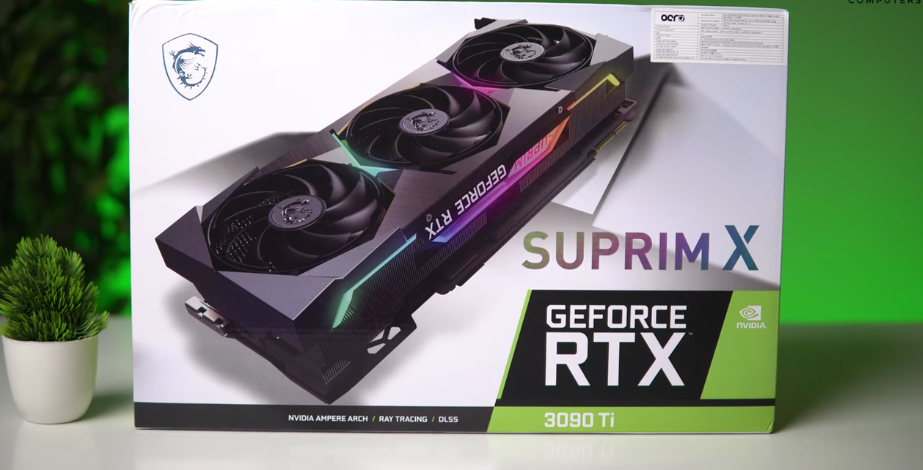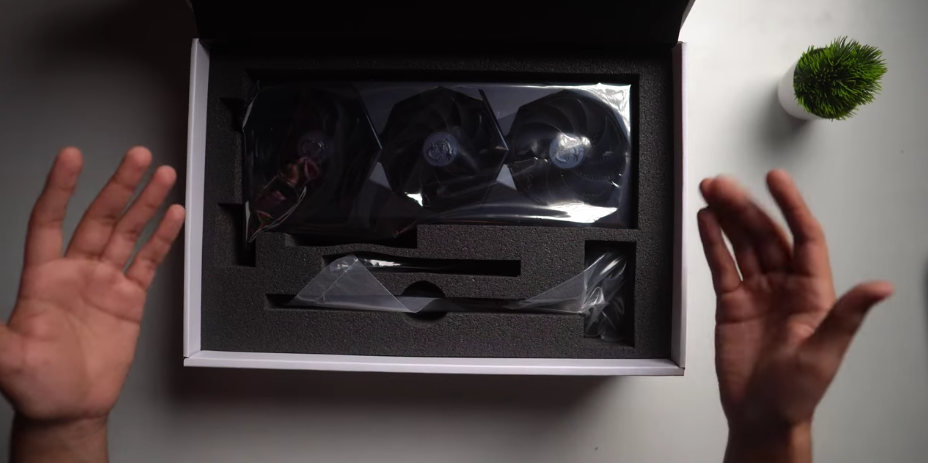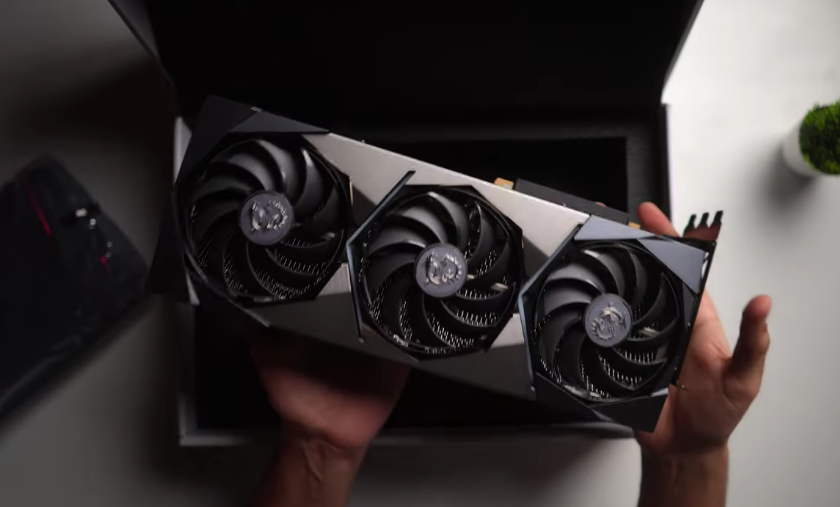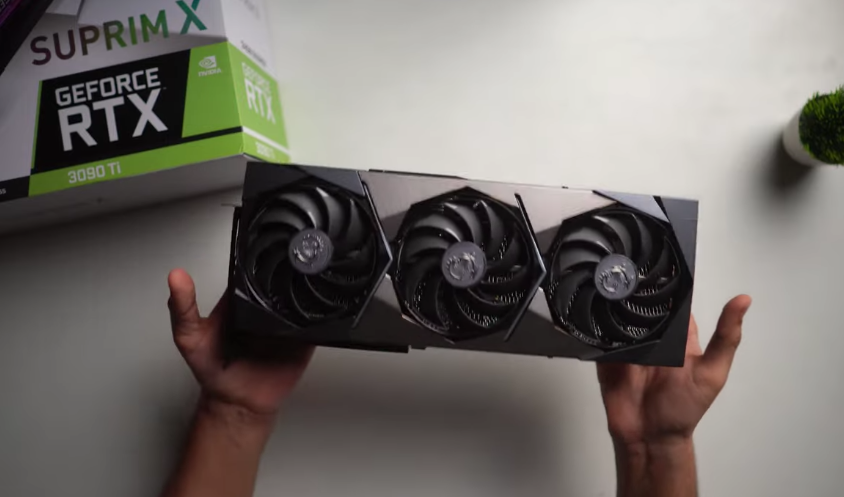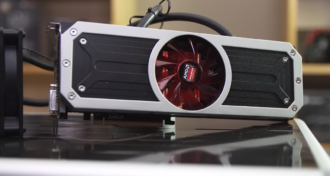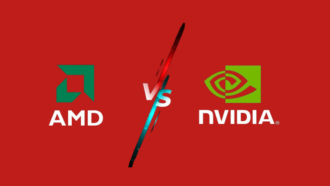3090 Graphics Card: A High-Powered, Expensive Graphics Card
In Shorts:
- The RTX 3090 is incredibly powerful, but most gamers will find it excessive with its 10,496 CUDA cores and 24GB VRAM.
- Because of its fast memory and high core count, it easily wins gaming benchmarks, particularly at 4K resolution.
- With its triple-slot cooler, even with a high 365W power consumption, noise and temperatures are kept to a minimum.
- There are better value options for less than $1,000, making the $1,499 MSRP seem excessive for mere gaming.
A top consumer graphics card currently available is the GeForce RTX 3090 Founders Edition from Nvidia. Its outstanding performance in gaming and multimedia creation applications is due to its 24 GB of ultra-fast GDDR6X memory and 10,496 CUDA cores. But at an MSRP of $1,499, it’s too costly and will be out of reach for the majority of gamers. To assist you with making an informed decision, we will examine the RTX 3090’s design, features, benchmark results, power consumption, thermal performance, and overall value.
RTX 3090 Specifications
| Graphics Processor | Nvidia Ampere GA102 |
| GPU Base Clock | 1395 MHz |
| GPU Boost Clock | 1695 MHz |
| Graphics Memory Type | GDDR6X |
| Graphics Memory Amount | 24 GB |
| HDMI Outputs | 1 |
| DisplayPort Outputs | 3 |
| Number of Fans | 2 |
| Card Width | triple |
| Card Length | 12.3 inches |
| Board Power or TDP | 350 watts |
| Power Connector(s) | One 12-pin |
Context and Layout
Built on Nvidia’s Ampere architecture, the RTX 3090 made its debut as the company’s next flagship graphics card in late 2020. Using Samsung’s 8nm manufacturing node, it employs a large 628mm2 die. The card’s dual-fan cooler, which has three slots, has one fan that blows air out the rear of the enclosure and another that recirculates air over the heatsink for better direct cooling. The 3090 remains operationally pleasant even while operating at full load, thanks to this resilient thermal technology, even though it has a high 365W TDP.
The 3090 appears to have some quite remarkable specifications on paper. For better performance in ray-traced games, it contains 82 cores of the second generation. With a whopping 936 GB/s of bandwidth and 24 GB of 19Gbps GDDR6X memory, you get a ton of virtual random access memory (VRAM). In contrast, the previous generation of 2080 Ti could only muster 616 GB/s of bandwidth and 11 GB of VRAM. Without a doubt, the 3090 takes it to the next level.
Comparison Findings
According to our benchmark results, the RTX 3090 significantly outperforms all of its competitors. Its 3DMark results were 25–45% better than those of the Radeon RX 6800 XT. When compared to AMD’s 6000 series cards, the 3090 shines in ray-tracing games like Guardians of the Galaxy and Formula 1, demonstrating its full potential.
The 3090 maintains its edge over the RX 6800 XT, which typically lags by 10-20%, even in conventional AAA games that do not use ray tracing. With its ample VRAM, the 3090 shines at higher resolutions like 4K, making it ideal for memory-intensive games like Shadow of the Tomb Raider and Red Dead Redemption 2. In essence, it’s overkill for 1080p and 1440p gaming, but it produces fluid frame rates at 4K on high settings.
Rainbow Six Siege was the one benchmark in which the 3090 did not come out on top. This is probably due to the fact that Nvidia’s drivers are not optimal for that older game. The 3090, however, is head and shoulders above the competition when it comes to gaming graphics. Players looking for the most bang for their buck will be satisfied with this card.
Ray tracing, DLSS, and power consumption
With the 3090, you may enjoy ‘free’ additional performance in games that use Nvidia’s newest DLSS 2.0 technology. With artificial intelligence upscaling, frame rates are dramatically increased, but visual quality is kept relatively the same by displaying at a reduced resolution. We were able to test the 3090 with GPU-intensive settings like ray tracing enabled and still see it outperform AMD thanks to DLSS. Additionally, the selection of ray-traced titles offered by Nvidia is far larger.
The revolutionary technology we’ve been enjoying, nevertheless, is not without a price. Our total system draw data show that the 3090 consumes a significant amount of power, reaching peaks exceeding 500W. This is around 100W more than the energy-efficient RX 6800 XT. Even when not in use, the Nvidia card consumes much more power. Thereby, a formidable power supply unit (PSU) is required.
Noise and Thermals
The GA102 GPU and 24GB of GDDR6X RAM remain remarkably cool and silent thanks to Nvidia’s vapour chamber cooler, even though they require an incredible amount of electricity. No matter how long we played, the temperatures in our testing never went beyond 83°C. The card stays silent and hidden since the fan speeds are kept low.
Headroom for Overclocking
The Founders Edition doesn’t offer much opportunity for overclocking because of the GA102 chip’s already extremely high stock clocks. Before experiencing instability, we were only able to increase the clock speed by another 1-3 percent. The GDDR6X modules provide greater room for improvement when it comes to memory overclocking, with customers claiming improvements of 500-1000MHz. Overall, though, the 3090 FE provides little when you first get it.
Good Return on Investment
The RTX 3090 runs into trouble at this point. As far as gaming graphics cards go, there’s no denying its supremacy. However, for $1,499, this purchase is only justified for the most passionate and well-off players. This is particularly true when considering resolution since the $699 RTX 3080 comes quite close in several games.
When it comes to ultra-detail 4K gaming, the 3090 is head and shoulders above the competition. For future proofing purposes, the large frame buffer will be advantageous as well. However, it’s excessive in every other case. Users of applications that need a lot of VRAM will find the 3090 to be a worthwhile investment since Nvidia promotes it as a more creative professional card. However, the astronomical price tag is not justified by gameplay alone.
You can get an AMD Radeon RX 6800 XT, which costs less than half as much, and it can compete with or even outperform the 3090 in some games. Therefore, Nvidia’s Halo card isn’t a good choice if you’re cheap or a fan of Team Red. The RTX 3080 and RX 6800 XT are more cost-effective options because the majority of gamers play at 1440p or below.
| PROS | CONS |
| Great Performance | Continuedly high power consumption even when not in use |
| 24GB of GDDR6X memory | |
| Best thermal solution |
Should I Buy RTX 3090 Founders Edition?
- Compared to other gaming GPUs, it is ridiculously powerful, including 10,496 CUDA cores and 24GB VRAM.
- The noise and temperature levels are kept remarkably low by the triple-slot cooler.
- Hands down, the best results in 4K benchmarks and games.
- Support for DLSS and ray tracing significantly increases the disparity with AMD.
- If you’re only looking for a gaming computer, you may get better alternatives for less than $1,000.
- Extremely power hungry; 850W+ power supply unit required.
- The RTX 3080 is a more cost-effective option for the majority of players.
- The speed is perfect for professional video editors who require 24 GB of VRAM.
Sure, go ahead and spend the money if you really want the best 4K gaming experience money can buy. The RTX 3090 may have niche applications, but it’s still an aspirational product for the masses. When it comes to sheer performance, Nvidia has created an unstoppable monster. Nevertheless, it’s rather expensive.
In summary
Ultimately, the RTX 3090 Founders Edition is all about going overboard. By demonstrating the pinnacle of Nvidia’s Ampere architecture and providing unparalleled frame rates, it pushes the boundaries of gaming GPU power to their extremes. Outside of 4K games, meanwhile, the power isn’t really justified due to declining returns compared to cheaper GPUs. The 3090 is unbeatable if money is no object. Better deals are available for most PC builders and gamers with a little smart thinking.
FAQs
When compared to GPUs from earlier generations, like the 2080 Ti, how does the RTX 3090 fare?
When compared to its predecessor, the RTX 3090 is light years ahead of the pack. When compared to the 2080 Ti, its benchmark performance is about 25–45% greater. The 2080 Ti’s capacity is doubled by the 24GB of VRAM.
For what resolution does the RTX 3090 shine?
When gaming at 4K resolution, the RTX 3090 truly puts its shine on. Even at maximum settings in 4K, it manages to keep a steady frame rate because of its large frame buffer and high core count. Overkill at 1080p or 1440p and lower resolutions.
Can you tell me how loud and hot the RTX 3090 runs?
The 3090 GPU remains remarkably cool and silent even when subjected to severe loads, thanks to Nvidia’s vapour chamber cooler. The card operates with cooler temps and quieter fans than its predecessors.
What is the RTX 3090’s power consumption?
The 3090 does not work with low-wattage power supply units. At its most, the system may consume more than 500W of electricity. For enough headroom, the majority of users will require a power supply of at least 850W.


